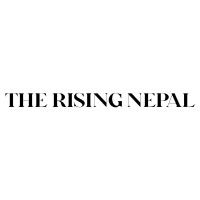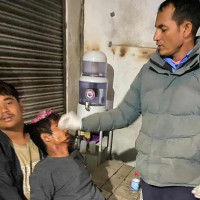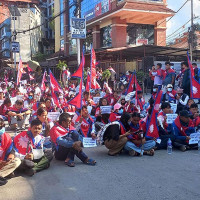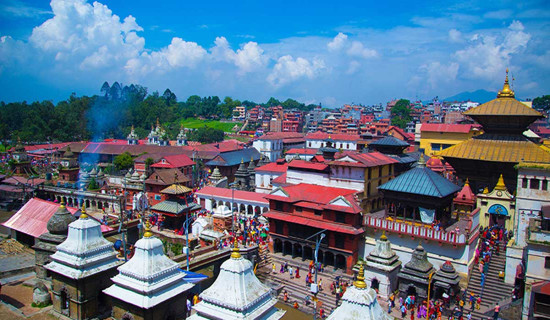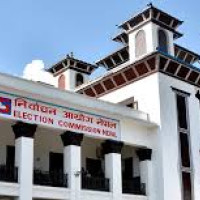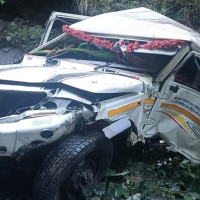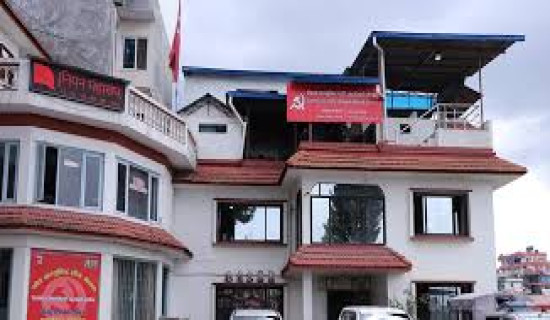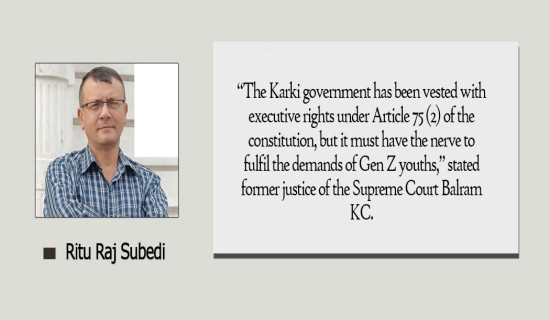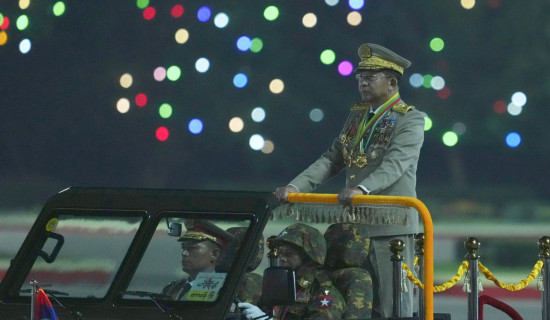- Saturday, 25 October 2025
Rein In Toxic Air
Nepal is a small but beautiful country full of greenery and natural resources." This is the statement that most of the Nepali have studied while growing up. Needless to say, Nepalis have always felt proud of their natural resources—diverse and unique—existing in the country. However, at this point, the cliché remark about Nepal's beauty misaligns with reality. People residing in the urban areas like Kathmandu and Pokhara will snort upon hearing about the pleasing aesthetics of the cities, reminiscing about the good old days when the pollution was yet to obscure the greenery. Of all forms of pollution, air pollution is the most lethal one, which has not only spoiled the cities' elegance but also afflicted the people living in them.
If it were possible to survive without breathing, people in urban areas would have opted for it rather than inhaling the toxic air. The air pollution has reached the point that the mountains don't look alluring anymore, with haze and other pollutants obstructing the view. In the past, the gleaming Machhapuchhre could be seen from almost every street of Pokhara, but now, the city can't boast about this arresting luxury. Gone are the days when masks were only spotted in hospitals. Now, people can't dare to go out without wearing them. To abate the severe effects of the toxic air and to maintain hygiene, motorcycle riders in Pokhara are often seen wearing plastic raincoats, a scene that looks so bizarre at the peak of the heat.
Come spring, and the air pollution worsens. Dry leaves falling off in the spring give rise to forest fires, ultimately increasing the pollution levels. The perennial construction work on roads produces and stirs dust, making it hard for people to access fresh air. In Pokhara, the route from Amarsingh to Bhandardhik is the most painful journey. The maintenance task seems to take forever, with a couple of years already spent. The delayed construction has tortured the daily commuters with the pollutants resulting from it. Add to this the problem of potholes and uneven road surfaces; every single day on the road is an assessment of a person's patience and tolerance.
Vehicular emissions, forest fires, and the dust stirred by construction work have toxified the air, increasing the risk of all forms of diseases. Elderly people and those with chronic respiratory ailments are the most vulnerable groups, as the toxic air directly affects the lungs. Fever, allergies, and ocular issues are common in people of every age. On a personal level, one should be fully ready to curb the ill effects of air pollution. For that, masks are compulsory, and using hand sanitizers can nullify the effects to some extent.
The Department of Transport Management (DoTM) must actively regulate the situation by imposing a ban on outdated vehicles. Though claims have been made in this regard, it is easier said than done. Had it been put into practice, the air over our streets wouldn't have looked so pitch-black. Also, the situation calls for an organised way of road maintenance with minimal harm to the atmosphere. At a time when people are disenchanted by poor delivery and weak governance, fresh air is the absolute minimum that people can ask for. By now, every citizen has understood that the toxic air we breathe today is a testament to the state's indifference in ensuring the most basic of human rights—that is, to breathe fresh air.


